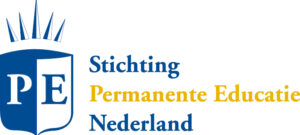The student can explain in his or her own words how the internet works and what role the internet protocol (IP) and IP addresses play in this.
The student can explain in his or her own words the differences between fixed and mobile, dynamic and static and internal and external IP addresses.
The student can explain in his or her own words what an internet service provider (ISP) and a regional internet registry (RIR) are.
The student can use a regional internet registry (RIR) to find out which Internet Service Provider (ISP) manages the block within which a specific IP address falls.
The student can name different search engines.
The student can explain in his or her own words how a search engine works and what information can and cannot be found via a search engine.
The student can identify the differences between the surface web, deep web and dark web.
The student can explain in his or her own words which factors influence the display of search engine results.
The student can tailor the use of a search engine to the information he or she wishes to find.
The student can use a search engine in an advanced way to search for information on the surface web as effectively as possible.
The student can explain in his or her own words what a URL, a domain name, a subdomain and a top-level domain (TLD) are.
The student can investigate the tactical information of a website.
The student can explain in his or her own words what an internet hosting provider (IHP), a registrant, a registrar and a register are.
The student can use formal and informal registers to find out who the registrant and registrar of a domain name are.
The student can map subdomains, web pages and names of a domain name.
The student can explain in his own words what archive files of websites are.
The student can retrieve archive files from a website.
The student can explain in his own words what “geolocating” means.
The student can check whether texts on a website can be found elsewhere on the internet.
The student can explain in his own words how a “reverse image search” works.
The student can use a “reverse image search” to check whether photos and videos on a website can be found elsewhere on the internet.
The student can explain in his own words what metadata and EXIF data are.
The student can extract metadata from files and EXIF data from images from digital data carriers.
The student can determine at which location the photo or video was taken based on the visible information in a photo or video.
The student can determine the distance between two objects via maps and satellite images.
The student can explain in his own words what is meant by social media.
The student can name various national and international social media platforms.
The student can search for users, usernames, user IDs, texts, photos, videos, events and pages on Facebook.
The student can map mutual friends of two or more users on Facebook.
The student can explain in his or her own words what an e-mail header is, how an e-mail header can be opened and how an e-mail header should be examined.
The student can examine an email header.
The student can search for users, usernames, user IDs, texts, photos and videos on X (formerly know as Twitter).
The student can explain in his or her own words what the difference between a “data breach” and a “data leak” is.
The student can conduct research into (data from) “data breaches” and “data leaks”
The student is able to think “out-of-the-box” in order to find research results.




